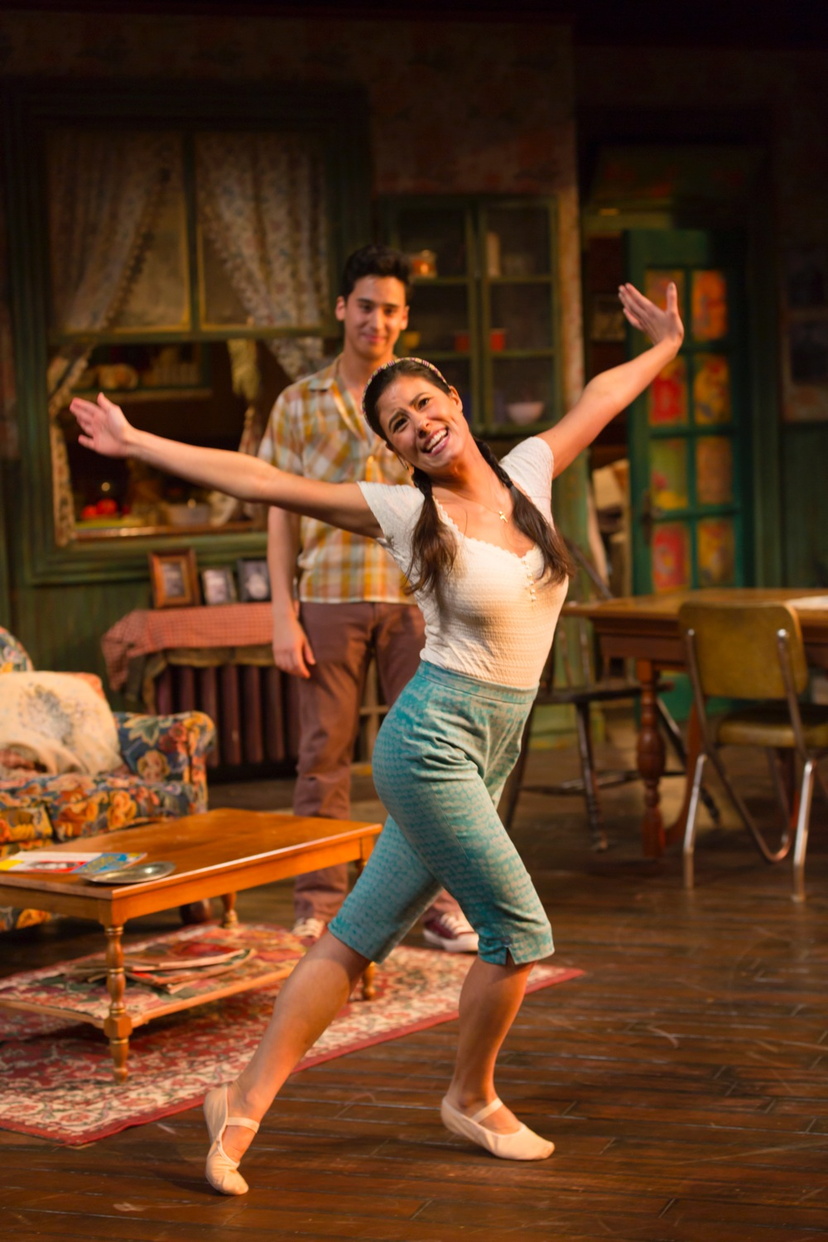If you’ve ever danced around the living room, singing a Broadway musical song, then the new play “Somewhere” by Matthew Lopez, now at Hartford Stage, is for you. It tells a distinctive story that is also very familiar, with elements of “Glass Menagerie” and cool mambo and the backstage drama, with characters so heart-throbbingly real that you want for them. It’s an old  fashioned play, allowing characters to develop, patterns to emerge, and a third act crescendo to an emotional climax, combined with musical theater tropes. We wait the whole show to see a character dance, and when he does…it’s a dream.
fashioned play, allowing characters to develop, patterns to emerge, and a third act crescendo to an emotional climax, combined with musical theater tropes. We wait the whole show to see a character dance, and when he does…it’s a dream.
The time is 1959. The place, the west side of New York. A Puerto Rican family struggles to make it, but fills their tiny apartment with dance and dreams. The mother and daughter work as ushers for Broadway theaters, memorizing every word, nuance, song, and dance of “West Side Story” and “Music Man” and “Gypsy” and more from that Golden Age. One son was a child actor in the “King and I” with Yul Brenner. “I walked in, I kneeled, I walked, I sat.” He has let go of the dream, working to ground his family. But this is like lassoing the Barrymore’s, here Puerto Rican Barrymore’s.
They live in the neighborhood of “West Side Story,” rough, rumbling, doomed. Robert Moses had a vision to remake New York, and tactically, his changes changed lives. Ten blocks surrounding this family’s apartment building were demolished, to make way for the largest cultural center in the world, Lincoln Center. At the same time, the film version of “West Side Story” was coming to life.
Maybe you remember the opening dance sequence of “West Side Story.”
It was filmed on the streets of New York, in the few days between evicting residents and the wrecking ball. Robert Wise supposedly paid the contractors $5000 to hold off on demolition between 67th and 58th Streets in August 1960 for shooting that dance sequence.
About 1/4 of the people who were evicted from this area were Puerto Rican, and many resisted moving until the desperate last moments, with power cut off, and demolition looming. Only about 10% of those displaced from condemned buildings were ever relocated to public housing, as promised.
At intermission, audience members talked about their comparable local experience–tearing down the Italian neighborhood. “I think Lincoln Center was more successful,” one commented. Not all urban renewal works as well, sadly, leaving bombed-out areas like those post-industrial cities in Connecticut.
What was this experience like, living the real West Side Story? That’s where “Somewhere” comes in. When do hope-filled dreams become dangerous illusion? When can we “imagine our troubles away,” and when are we merely deluded? Who gets to dream, and who sacrifices for those dreams?
The play assuredly explores these questions while thrusting its family into an ironic version of the American theatrical dream. Each dance in their tiny apartment heals for a moment, then the family is back to reality. Or at least some of the family. By the end, when the stalwart son is given permission to dream again, the final dance does what all musicals hope for–allow the audience to release its collectively held breath and soar with the spirit of the characters.
 And “Somewhere”? I think it will soar, too, first to New York, then beyond. Tomorrow, I go to Lincoln Center and will see how that feels after this experience. I see a play about another New York legend, Moss Hart, and his autobiographical “Act One.” The theater is in the blood–dance and dream on!
And “Somewhere”? I think it will soar, too, first to New York, then beyond. Tomorrow, I go to Lincoln Center and will see how that feels after this experience. I see a play about another New York legend, Moss Hart, and his autobiographical “Act One.” The theater is in the blood–dance and dream on!

